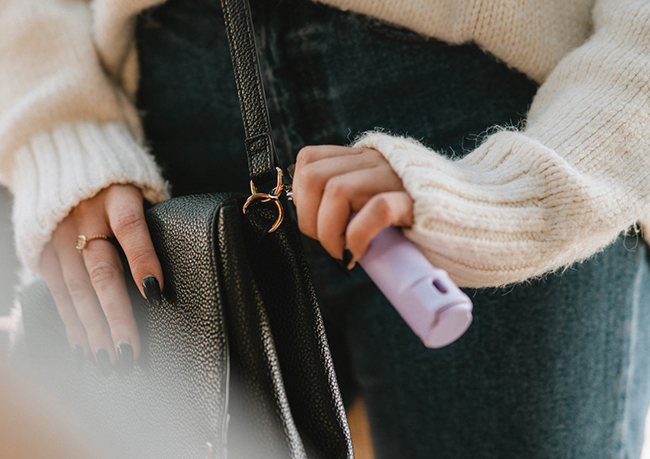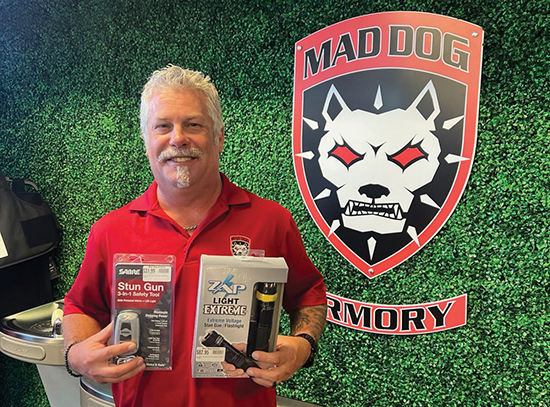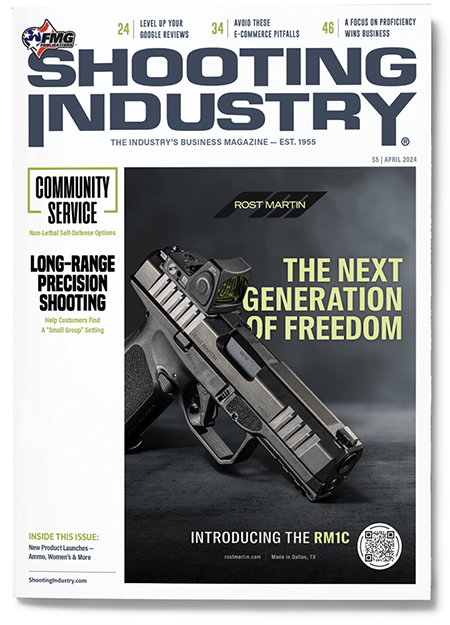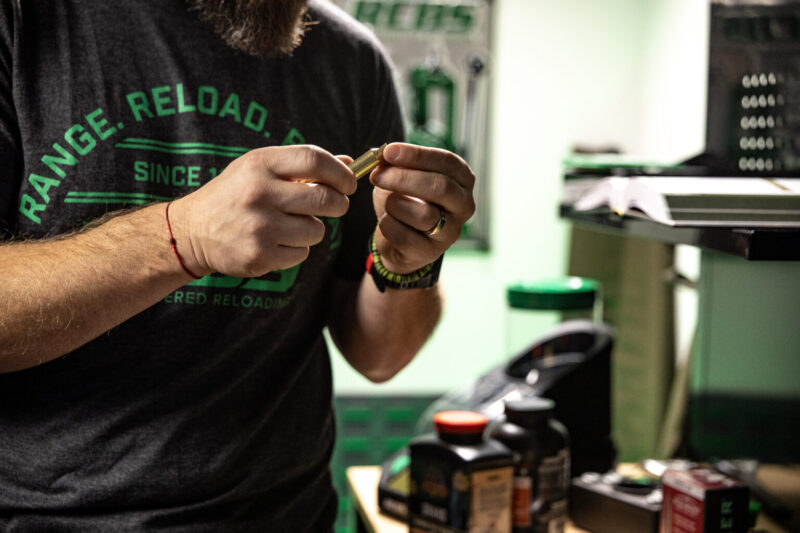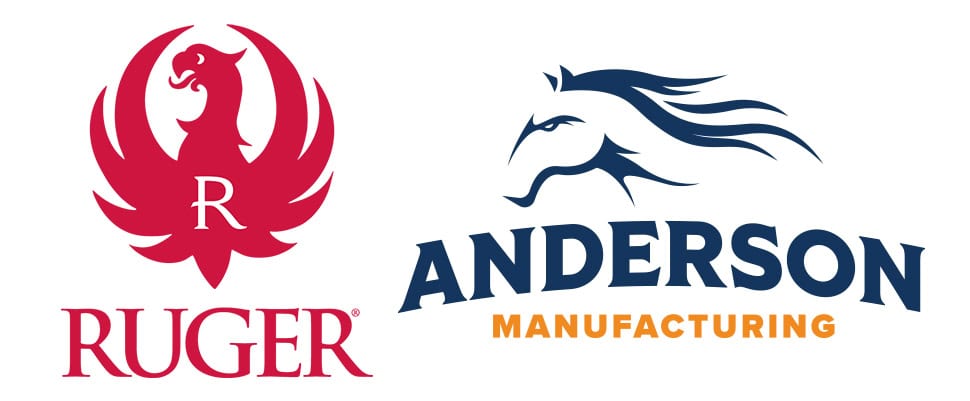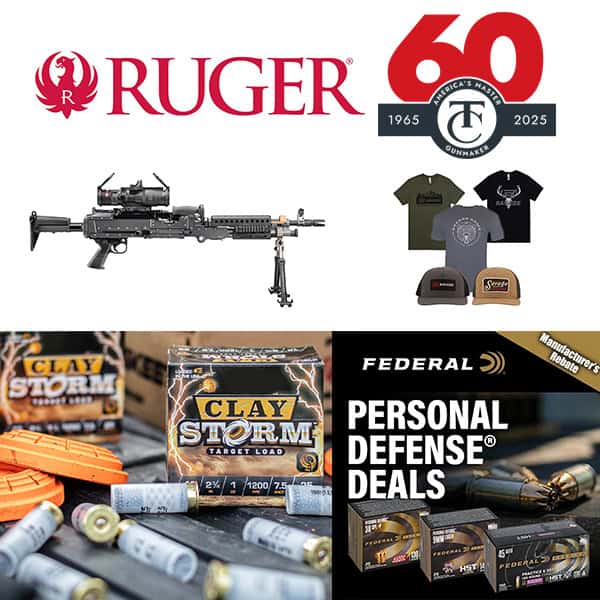Non-Lethal Self-Defense Options
In early August each year, Metro Shooting Supplies in Bridgeton, Mo., offers a special promotion on pepper spray and pepper gel. It could be a two-for-one deal or a free training canister filled with water.
Why August? It’s when parents are getting their kids ready to leave for college, says John Stephenson, general manager of the suburban St. Louis store. Those kids may not be able to take a gun to school, but it doesn’t mean they can’t take some protection.
“They can carry something on campus that’s perfectly legal for them to have,” Stephenson said.
This brings us to the third installment of our three-part series exploring self-defense sales. Previously, we looked at handguns and long guns. This month, we’re exploring sales of non-lethal options.
A Necessary (And Profitable) Category
It’s a sales category that sits on the outer edges of what a “gun store” is all about. We’re talking about things like pepper spray, stun guns, Tasers, batons and knives — though the latter two could certainly be lethal.
There are solid profit margins (as much as 40 to 60%) on many of these items. But, particularly for smaller shops, they can take up precious shelf space that might otherwise be filled with guns, ammo and related accessories.
It’s an important consideration for Shad Biltz, co-owner of Florida’s Mad Dog Armory, which has locations in Tampa and Largo. Combined, the two shops have about 3,000 sq. ft. of retail space.
Still, he doesn’t see it as an option he can discard.
“Ultimately, it’s a community thing,” Biltz said. “I may not rifle through that inventory, but having it there for the people who need it is very important to us.”
Both stores also share a philosophy regarding customers and firearms. Not every person who walks through the front door wants, or even needs, a gun. Having a range of non-lethal options allows the stores to find the right self-defense fit for every customer.
“There are definitely a lot of people out there who just don’t want to carry a gun,” Biltz acknowledged. “That’s when you have a conversation and try to figure out what’s the best thing for them.”
Pepper Spray Leads The Way
For Metro Shooting, there is a clear frontrunner in this category.
“Pepper gel is our number-one seller,” Stepheson confirmed. “It’s the one we recommend the most.”
He prefers the gel (with SABRE as the top seller) to the spray because it’s less likely to blow back and potentially disable the user if the wind happens to be blowing in the wrong direction.
“The idea is to disable the assailant. So we prefer pepper gel because it’s more of a controlled stream and it kind of sticks to people,” he explained.
Metro carries a range of colors and sizes, with the two most popular being a keychain model and a 2-oz. version that comes with a nylon carry pouch. The larger model is ideal for people who want some form of protection while jogging, hiking or walking the dog.
Biltz, in Florida, sees pepper spray or gel (by SABRE and Mace) as the best self-defense tools for some customers. It gives them the ability to create valuable space between themselves and an assailant.
“You can be anywhere from 10 to maybe even 20′ away and deploy it,” he explained. “So, you definitely have some space. The idea is to get away.”
Other Options
One of the reasons both stores urge customers to first consider pepper gels and sprays is the belief other options have shortcomings. Knives, batons and stun guns are close-quarters weapons, while Tasers can be difficult to use accurately.
Still, both stores carry a variety of products for people who want something different. Those include:
Tasers & Stun Guns: Metro Shooting generally steers customers away from these as a primary self-defense option. They aren’t reliable enough against all potential attackers, Stephenson argues.
He tells a story of bringing his beefy son-in-law (he stands 6′ 5″ tall) into a CCW class, where they cover a range of self-defense tools. The son-in-law volunteered to be zapped several times by a stun gun (with little effect) to demonstrate one of the downsides.
“This is an option, and you might have it as a backup,” Stephenson argued. “But you’re better off with pepper spray and pepper gel.”
At Mad Dog, Biltz notes customers often don’t know the difference between a Taser (it shoots wired barbs into the target) and a stun gun (it must be pressed against the target).
He sees strengths and weaknesses in both of these options. Tasers are good at creating space between the user and the target, but the barbs can miss the target or even be pulled out. They are also considerably more expensive than stun guns, which start around $30 or $40. Tasers basically cost the same as a real gun.
So why would a customer choose a Taser instead of a gun? It often comes down to the customer’s comfort level, he contends.
“They may not feel like they could, you know, kill somebody,” Biltz said. “Ultimately, you don’t know what you’re willing to do until you’re in a situation.”
Batons: Metro Shooting has success with Smith & Wesson’s line of collapsible batons, with the 16″ and 24″ being the most popular. They sell well at Mad Dog too, despite being a weapon that requires close contact with an assailant.
“It’s pretty barbaric when you think about it,” Biltz suggested. “You’re basically breaking bones. But it definitely gives you an advantage, which is what you’re looking for.”
Knives: Of course, every gun store is going to carry knives. Both shops carry a wide assortment of styles, including folders, assisted opening, out the front and fixed blades.
Metro’s top brands include Templar, CRKT and Smith & Wesson. It’s an easy inventory choice, according to Stephenson: “We can display 40 or 50 different knives in an 8′ case.”
At Mad Dog, favored brands include Kershaw, Benchmade and Hogue. Biltz prefers to stick with U.S. knifemakers whenever possible. And while knives may sell well, those sales don’t tend to be driven by people looking for self-defense options.
“Most of the knife people I see are people who just like knives,” Biltz shared. “It’s very seldom I have somebody come in and say: ‘I need a knife for self-defense.’”
Training
One of the downsides of non-lethal self-defense tools is they all need some level of training or practice to be effective. Even using a practice pepper spray canister (filled with water) can help the user better understand what the tool can and cannot do.
Gun ranges are a great place to practice shooting and gun-handling skills. It’s not so easy, though, to find a way to practice with the devices discussed in this article. And it’s a challenge for gun stores to be able to offer training.
At Metro Shooting, instructors in the CCW class will sometimes touch on non-lethal options, including pepper gel and stun guns. They’ll talk about the value of carrying a solid flashlight and a knife.
The store has, in the past, offered classes dedicated to hand-to-hand combat and non-lethal weapons. One was taught by a former U.S. Marine and another by a martial arts instructor. Both were successful, particularly with women.
“Unfortunately, we just don’t do it anymore,” Stephenson said. “We just don’t have the instructors to do it, but I know it’s popular.”
At Mad Dog Armory, non-lethal options are covered in two of the classes offered by Biltz’s wife and store co-owner Jillian Biltz. Among the things they consider are situational awareness and how to be ready to deploy something like pepper spray.
“You can have pepper spray on your keychain, but if your keys are in your purse, it’s not going to do much good,” he pointed out. “You should probably have it much closer and ready to be utilized, whether you think you need it or not.”

